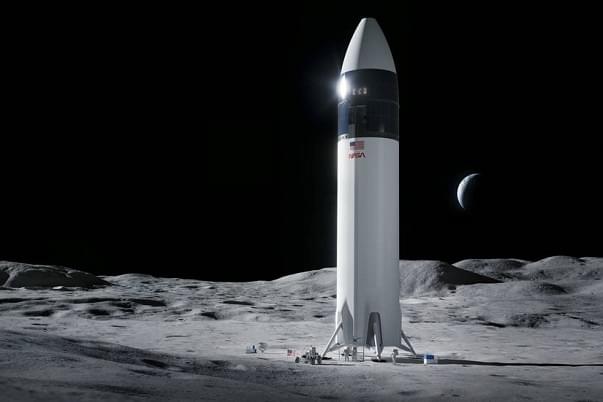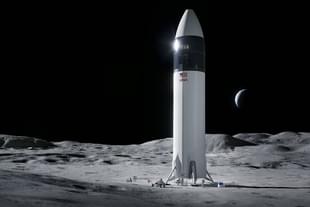News Brief
NASA Selects SpaceX To Develop Human Lander To Carry Two American Astronauts To Moon
Swarajya Staff
Apr 17, 2021, 01:16 PM | Updated 01:16 PM IST
Save & read from anywhere!
Bookmark stories for easy access on any device or the Swarajya app.


The American space agency NASA is getting ready to send astronauts to explore more of the Moon as part of its Artemis program, and the agency has selected SpaceX to continue development of the first commercial human lander that will safely carry the next two American astronauts to the lunar surface.
At least one of those astronauts will make history as the first woman on the Moon. Another goal of the Artemis program includes landing the first person of color on the lunar surface.
The agency’s powerful Space Launch System rocket will launch four astronauts aboard the Orion spacecraft for their multi-day journey to lunar orbit. There, two crew members will transfer to the SpaceX human landing system (HLS) for the final leg of their journey to the surface of the Moon.
After approximately a week exploring the surface, they will board the lander for their short trip back to orbit where they will return to Orion and their colleagues before heading back to Earth.
The firm-fixed price, milestone-based contract total award value is $2.89 billion, NASA said in a statement.
"With this award, NASA and our partners will complete the first crewed demonstration mission to the surface of the Moon in the 21st century as the agency takes a step forward for women’s equality and long-term deep space exploration,” said Kathy Lueders, NASA's associate administrator for Human Explorations and Operations Mission Directorate.
“This critical step puts humanity on a path to sustainable lunar exploration and keeps our eyes on missions farther into the solar system, including Mars,” she said.
“This is an exciting time for NASA and especially the Artemis team,” said Lisa Watson-Morgan, program manager for HLS at NASA’s Marshall Space Flight Center in Huntsville, Alabama.
SpaceX’s HLS Starship, designed to land on the Moon, leans on the company’s tested Raptor engines and flight heritage of the Falcon and Dragon vehicles. Starship includes a spacious cabin and two airlocks for astronaut moonwalks.
The Starship architecture is intended to evolve to a fully reusable launch and landing system designed for travel to the Moon, Mars, and other destinations.
With NASA’s Space Launch System rocket, Orion spacecraft, HLS, and the Gateway lunar outpost, NASA and its commercial and international partners are returning to the Moon for scientific discovery, economic benefits, and inspiration for a new generation.
Working with its partners throughout the Artemis program, the agency will fine-tune precision landing technologies and develop new mobility capabilities to enable exploration of new regions of the Moon.
On the surface, the agency has proposed building a new habitat and rovers, testing new power systems and more. These and other innovations and advancements made under the Artemis program will ensure that NASA and its partners are ready for human exploration’s next big step—the exploration of Mars.




